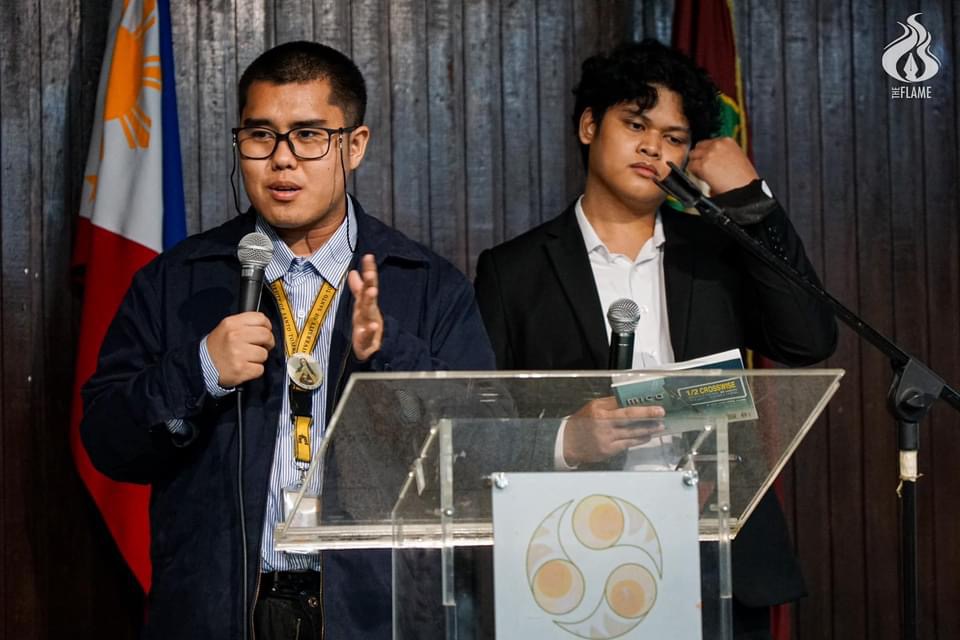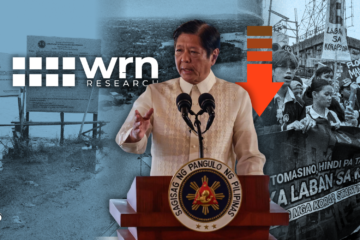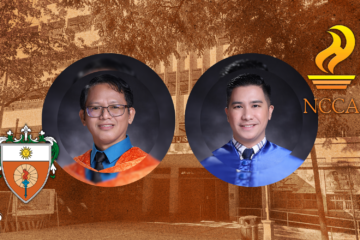
TWO THESES from UST journalism seniors bagged second place in their respective categories during the 2024 Philippine Journalism Research Conference (PJRC) on Friday, June 7.
A study titled “Questions on the Questions: A Thematic Analysis on the Questions of Journalists during Interviews with President Ferdinand Marcos, Jr.” by Aaron Bartilad, Jan Paolo Espolong, Joseph Ryan Moscoso and Jabez Portilla finished second under the general research category. The thesis group was under the supervision of UST journalism instructor and The Flame adviser Alexis Romero.
Another study from UST, “Virtue signaling among Filipino journalists on X during the 2022 Philippine election,” secured the second spot in the new media, AI (artificial intelligence) and other emerging trends in journalism category. The thesis group composed of Maureen Kerl Curitana, Charles Figueroa, Arielle Chelsea Garcia and Miguel Raphael Peconcillo were advisees of journalism Assoc. Prof. Jeremaiah Opiniano.
The University of the Philippines, which won the top awards in three of the five categories, emerged triumphant in the same category for “The journalist can be a vlogger, too: An exploratory study on the storytelling techniques and ethics that guide Filipino journalist-vloggers” by Guinevere Mariedelle Latoza.
Other entries who won first place were “Medyo Media” by UP student Albert Josef Lirio under the special projects in journalism category; and “Para, Saan?: Ang Kwento ni Ka Nolan” by Almira Coleen Mendoza, Andrea Nicole Ebdane and Oliver Judal Jr. under the news documentary category.
Ateneo de Manila University claimed the top spot in the general academic research category for “Holding the Line: How Filipino Trauma Reporters Construct the Meaning of Journalism in their Coverage of the Duterte Administration’s War on Drugs Campaign” by Alexandra Elicano, Joane Marie Beldua and Ma. Francesca Gines.
Completing the list of first placers was De La Salle University’s Therese Diane Villanueva who won the best photo essay titled “Walang Buntot Ang mga Mangyan: Kabang-yaman ng Kultura, Buhay at Gawain ng Buhid at Hanunuo Mangyan.”
Seven other entries from UST, including one by The Flame, finished as finalists in PJRC 2024.
READ: Artlets seniors, The Flame among finalists in nat’l journalism research conference
Upskilling
In the same conference, which focused on AI in journalism, news anchor Roby Alampay urged the new generation of journalists to focus on upskilling themselves “as people,” saying no form of AI could replicate their interpersonal skills.
“You have to upskill as a person, you have to upskill as somebody who knows how to empathize, who can draw back [and] who can point out what history really is. These are real skills and people who know how to talk, empathize and listen will have an advantage in the future,” he said.
According to Alampay, human journalists have the leverage to provide “non-digital data” which he said cannot be fully captured by AI tools.
Discerning newsworthy stories, providing context and initiating meaningful conversation with sources are some key practices that could be applied through such skills, the journalist said.
He called on future journalists, whom he described as “hunter-gatherers of information,” to exercise newsgathering from the ground up.
“[T]he first job of talking to people, of picking up sand and feeling it with your fingers, of smelling something wrong with the air, these are non-digital data. And we still need people to understand what the potential stories are and what stories need to be told that have not been captured by [AI],” Alampay said.
Manila Standard journalist Joyce Pañares shared the view, saying seeking the “why” of a question could only be supplied by human writers and not AI.
“It (AI) cannot provide context, color [and] nonverbal communication; they cannot be pursued by AI. That should be our strength because storytelling is ours,” Pañares said.
“You need to upskill but your core skill needs to be there as well. It should always be present and you should always know to whom you are writing for and why you are writing. It should be very clear to you,” she added.
This year’s conference was themed, “The Future of Philippine Journalism: Emerging Challenges and Opportunities.” The event was co-organized by UST and the Polytechnic University of the Philippines. F – with reports from Cali Asajar



